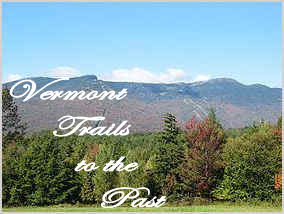Trails to the Past of Vermont is requesting any genealogy materials that you may have such as Obituaries, News Clippings, Wills, Deaths, Births, and Marriages, You do not need the certificates, but only the source of the information. If you should happen to have any of these items, please email them to Marie Miller, the Northeast District Administrator. Thank you.
The county was given the Latin name for Scotland, in honor of the many settlers who claimed ancestry there The county seat is St. Johnsbury The county shares the same pre-Columbian history with the Northeast Kingdom.
Rogers' Rangers were forced to retreat through the county following their attack on Saint Francis, Quebec in 1759. To confound their avenging pursuers, they had split up. One group came south over the summit into the Passumpsic River Valley.
Vermont was divided into two counties in March, 1778. In 1781 the legislature divided the northernmost county, Cumberland, into three counties: Windham and Windsor, located about where they are now. The northern remainder was called Orange county. This latter tract nearly corresponded with the old New York county of Gloucester, organized by that province March 16, 1770, with Newbury as the shire town.
On November 5, 1792, the legislature divided Chittenden and Orange counties into six separate counties, as follows: Chittenden, Orange, Franklin, Caledonia, Essex, and Orleans. There is a supposition that the county was called Caledonia, to commemorate the large number of Scottish settlers.
Caledonians joined the Union Army in response to a call for volunteers. In September 1861, they joined the Vermont 6th Vermont Infantry, and helped fill out Companies B, D and E. The regiment ultimately became part of the First Vermont Brigade.
Cities and Towns



